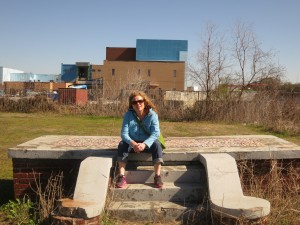On the 10th anniversary of Katrina, I’ve been reflecting on the lasting effects my partner and I witnessed in New Orleans earlier this year, and the lessons they offer about the differential impacts of “natural” disasters depending on one’s income. In the wealthy Garden District, vintage homes remain perfectly restored. In an upper middle class neighbourhood, modest older homes are interspersed with huge, new ones, presumably built by those with adequate insurance. In a lower middle class neighbourhood, at least half the lots are vacant, often with only the concrete stoop remaining. In low-income wards, so many boarded up, abandoned, and increasingly unstable dwellings covered in graffiti.
There is a parallel to the impacts of climate change, which are already happening and certain to get worse. The poorest global citizens will experience the greatest impacts (most hot days, highest sea level rises) simply by virture of their location, they are most vulnerable when that occurs (e.g., by virtue of substandard housing and sanitation and already-compromised health), and they don’t have resources with which to adapt to these huge, new challenges. And as in New Orleans, the wealthiest global citizens have just been just ignoring that as we drive away from the global deluge in our air conditioned cars.

